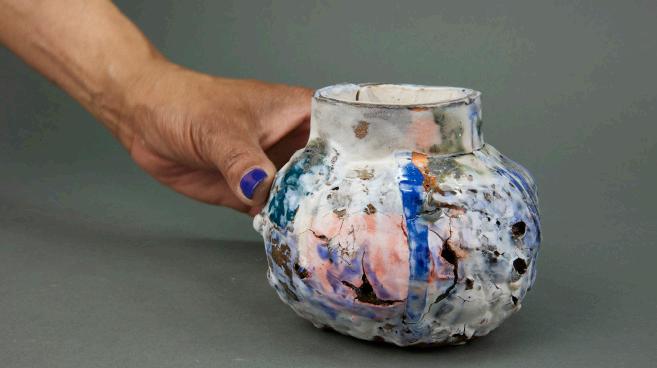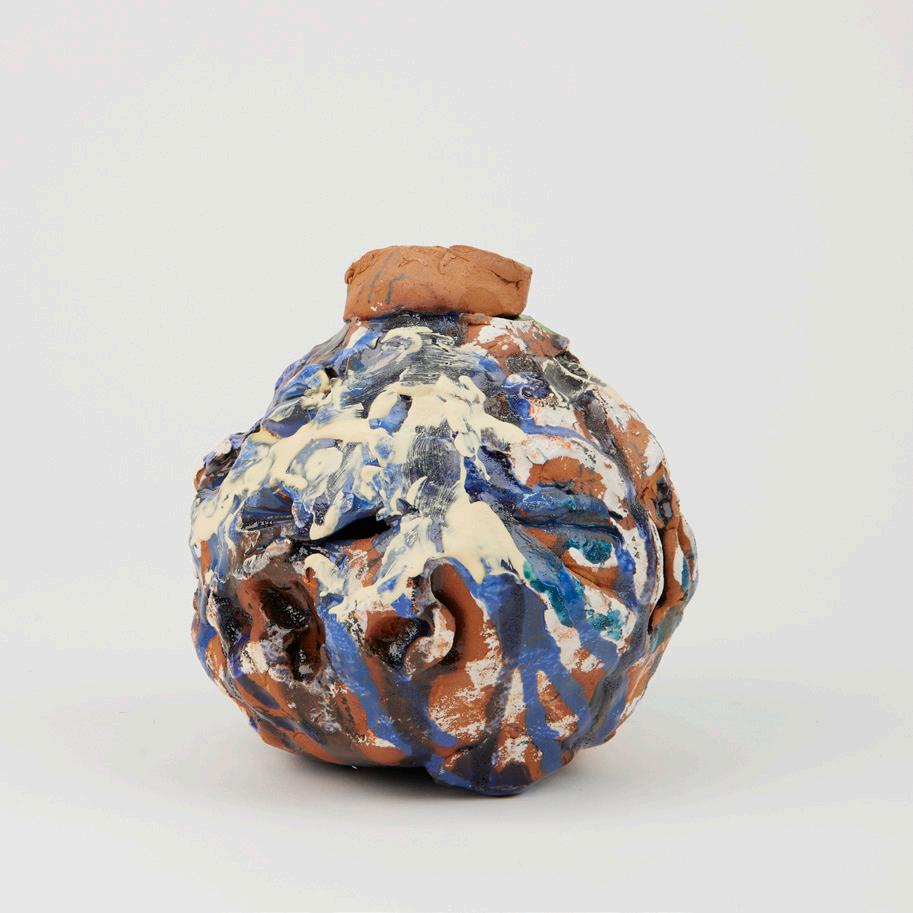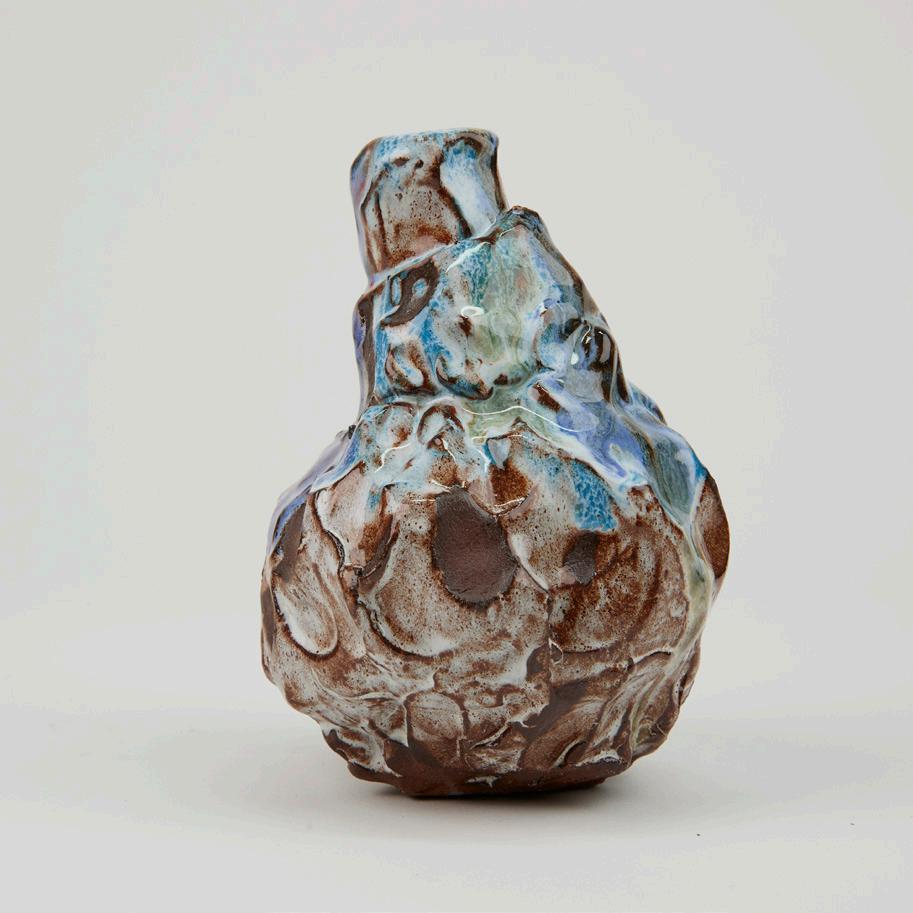
This work explores the diaspora of objects. My starting point is the ‘traditional’ domestic coiled terracotta pot, burnished, low fired and communally made and by women in West Africa. Pots travelled to colonial museums where they were decontextualised and classified as ethnographic objects to highlight otherness and remain in these settings where they suggest a fixed tradition and creative stasis.
Working within this ceramic lineage, and drawing on craft and historical narratives, my intention has been to challenge the idea of fixed tradition by disrupting and activating form and surface, as a means of storytelling and embodied practice. I worked expressively, and gesturally leaving making marks and the print of the hand to create objects that evoke labour and landscapes, and are bodily in form and expression. Layers of colours insinuate fire, sun, vegetation, night, tropicality, joy, humour and pain, always with the blue of the ocean- absolutely fundamental to diasporic histories.
The work sits alongside wider socio-political narratives and decolonial discourse which I have brought together through making. It can speak to post-colonial hybridity, Gilroy’s double consciousness of the black Atlantic, or the objects can simply exist in their own space on the edge of pot and figure, traditional craft and art, glaze and paint, monument and decoration.
I am a daily list-writer and have been exploring the list as a method of poetic critical writing.
Organic material burns out during kiln firing. I embed corn, coffee, rice, peanuts and sugar - all linked in some way to the diasporic experience, to leave thier trace.


sunwarming his shoulder
h43 d27cm engobe, porcelain slip and glaze



incite inflict inhabit inhibit injure inure inveigle invite invoke involve
what sweet harmony the breeze brings me
H56 d69 cm
engobe, underglaze, glaze

There is always a wonderful element of unpredictability in the transformation of clay to ceramic at high temperature in the kiln. In my imagination, this piece consciously shifted position and posture to find respite from the heat.



failure making manifest unexpected celebrate challenge chaos knowledge power process progress reflect represent risk form think build discuss glow coil

to the waves left behind h28 d41 cm coloured clay, layered white engobe


the moonlight playsgolden butterfly
h50 diam 75cm glaze, underglaze and engobe

yellow white imprint plan diffract read provoke colour write disrupt smile golden green burn mark trace burnish
The smoother surface on this piece makes it read more like a canvas. I layerd and erased colour over a period of a few weeks.


constellations of liquid treasure
h35 d30 cm layered underglazes


orchestra - is the sea
h40 d39 cm
engobe, underglaze and glaze

At a certain point when I have been coil building, I put the form into a bucket or bowl to support it. I continue without being able to see the part that I have built, which allows me to work expressively in the moment without worrying about symmetry or the what the whole piece looks like. At the end, I decide which will be the top or the base.

reference bleed dark day imagine imbricate impart ephemeral theory memory
Where is your son?
What is your home?
h58 d42 cm engobe, underglaze and glaze


weep wait wound weight
h37 d44 cm
brushed engobe bisque fired

red, i just decided...red
The surface on this piece was about ‘embracing ruin’ as a way to unlock my fear and inhibition about painting in the bold and expressive way that I wanted to achieve.

materiality texture mould language lush slump light sea sky ethnography express distort dominant concatenation lighten enlighten labour forms

broken in a langorous dance
h36 d40 cm


engobe, underglaze and glaze

shout landscape ochre contest hierarchy translate water obliterate organise spectatorial subjectivity
terracotta territorial artistic attention metaphor flame

We are in the middle of the sea…
Crazy in space
h50 d59 cm engobe, underglaze and glaze


The sea in return kindles the fires
h27 d30 cm engobes, glaze sandblast areas



black blue body boundary

the waves after him run
h39 d28 cm engobe, underglaze and glaze

erase canonise joyful sorrow ephemeral agency figure fire order sun speak calm narrative system incendiary dialogue dissonance dull earth
















